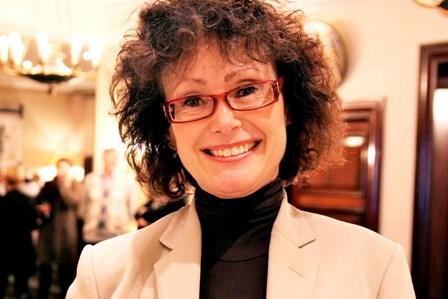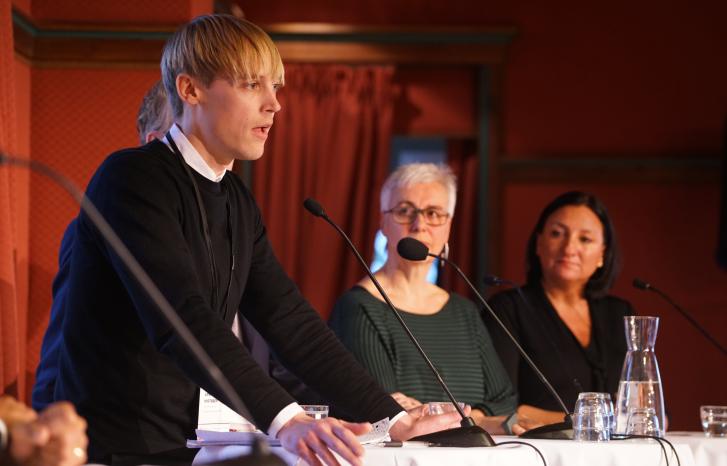“Leadership style can be independent from biological gender. Men and women don’t have different styles of leadership. We should be cautious when working with gender balance and gender equality in organizations,” says Anne Grethe Solberg.
Solberg recently completed her doctoral degree in sociology with a thesis on gender and innovation management. Her study shows that women’s and men’s leadership styles are only marginally different.
The study is based on extensive questionnaires answered by 917 top- and mid-level managers in private business in Norway. 34 percent of them were women. The questionnaires measure the managers’ perceptions of their own gender role identification, leadership style and innovation climate.
Masculine minority
An almost equal number of men and women fall into four categories of leadership style: masculine, feminine, androgynous — both masculine and feminine — and undifferentiated — neither masculine nor feminine. These leadership styles are used in the Bem Sex Role Inventory (BSRI), a standardised instrument for measuring gender roles.
“It’s more of a myth than a documented fact that leadership is specifically linked to the masculine. Critique of the dominance of the masculine male leadership does not correspond with the findings in my sample,” explains Solberg. She finds that there are nearly as many male managers with a feminine leadership style as there are female managers with a masculine leadership style. An equal number of female and male managers have an androgynous leadership style. What's more, the so-called masculine leadership style — which includes both women and men — comprises only 30% of the sample.
Androgynous leadership style best
According to Solberg’s study, androgynous managers report having the best innovation climate in their groups. A good innovation climate entails setting clear, common objectives and visions, creating a sense of security for participants in the work group, facilitating the development of ideas and creativity, and keeping the group’s work on task. The androgynous managers are in the minority in the sample; approximately 22 percent of the managers fall into this category. They are more or less equally distributed between male and female managers.
“Kristin Skogen Lund, Director General of the Confederation of Norwegian Enterprise, fits the description of an androgynous leadership style perfectly. She lets others take the lead and helps them develop their talents and skills, while never putting herself first," says Solberg.
“Effective managers are not authoritarian and domineering. They are facilitators who dare to be objective.”
“Androgynous managers have less of a need to put people into boxes, compared to feminine and masculine managers. They have a more coaching style and are empathetic, understanding, democratic and participant oriented. They are concerned about change and are the engine that propels the discussion forward,” says Solberg.
By contrast, managers who are strictly masculine or feminine create less open groups, resulting in a poorer climate for innovation. Masculine and feminine managers are more prone to categorising other workers and ascribing certain characteristics to women and men, which more often creates an environment for discrimination, according to the researcher.
See also: Daughters ignored as leader of the family business
The efficiency myth
Solberg’s results also challenge the notion that gender diversity in organisations leads to greater efficiency, creativity and profitability, one of the main arguments on which Norway’s well-known gender quota for public company boards is based.
“Diversity and efficiency doesn’t happen just because a board or a group is comprised of both women and men,” states Solberg.
“In order to benefit from the alleged gender differences, we need to develop a new type of culture of communication that is inclusive for heterogeneous groups, that takes into account that people are different – regardless of biological gender. You have to cultivate the difference.”
New generations
In her doctoral thesis, Solberg speculates as to whether authoritarian masculine leadership is no longer what is needed to achieve the results sought today. Globalisation has intensified the pressure and demands for innovation and change, with a corresponding focus on emplyees and knowledge. According to her study, it is the androgynous leadership style that is needed to meet these demands.
In addition, Solberg believes that managers who grow up with a high degree of gender equality in modern-day Norway are freer to make choices regarding gender roles than previous generations.
“The average age of the sample is 45, so the managers who grew up in the 1960s, 70s and 80s may have been less influenced by stereotypical role models than previous generations. Their families have probably had a relatively good financial situation because their mothers worked outside the home, and they may have had fathers with caregiving responsibilities at home,” Solberg writes.

Solberg’s study does however confirm some stereotypical findings: What distinguishes men from women the most in her sample are issues related to their attitude towards gender equality. The male managers in the sample do not have such strong opinions about gender equality as the female managers do.
See also: Easier for men to become top researchers
Cracks in the glass ceiling
In 1995, Solberg wrote a book on the glass ceiling that prevents women from reaching the top of the management hierarchy in society. Prior to that, she wrote her thesis at second-degree level in sociology on the same topic. Not to mention her systematic work over several decades as a head hunter and consultant focusing on the recruitment of women to high-level management positions, and in particular exposing attitudes about gender. So it came as a big surprise to her, when Solberg did not find support for the so-called glass ceiling in her doctoral research material.
“We still see differences in men’s and women’s salaries, and we see statistical differences between the number of men and women in management. But what happens within the organisation’s four walls might express itself differently than it used to. The theory of the glass ceiling is 20-30 years old. It has become a theory surrounded by myths about the unconscious and invisible effects of gender. We have to dare to look at gender and leadership with new perspectives. I at least cannot find any cases of a glass ceiling in my data,” says Solberg.
“The individuals who have reached the top levels represent an equal number of androgynous, feminine and masculine gender role identities.”
Beyond family life
Solberg emphasises that new questions, new measures and new explanations are needed for working with gender and management issues. Also, when trying to find the causes of gender imbalance, she would like to see family life taken out of the equation.
“A great deal of gender and management research focuses on the reproductive sphere. The question ‘But how do you manage to have a family life then?’ is the standard question. I don’t have a need to link what prevents women from achieving management positions to how they organise their family life. In any case, it’s more exciting to look at what happens internally in the family,” says Solberg.
“ I’ve been working on these issues for many years with career-oriented women and men. What I see is that many men and women live in two-career families with children, and they make things work. And it doesn’t cost the women more than the men. Just read Knausgård, and you will see see that being a father and fatherhood does not have to be very different from being a mother and motherhood.”
New times
Now she has a burning desire to study employees’ perspectives of managers. She also has plans to write books – one based on her doctoral thesis, a “how to” book on how to work with gender balance in organisations based on her many years of practical work experience, and a book on self-management which also discusses how to break codes.
“The most exciting aspect of my thesis is my findings about the glass ceiling,” says the sociologist.
“We have to think along new lines and find other models for studying organisations. I don’t have the theories and models yet, to analyse what this actually means. But I’m willing to throw traditional understandings of gender overboard in order to explore the significance of my findings in other ways.”
Translated by Connie Stultz.
Anne Grethe Solberg owns and operates the consulting firm Gender Consulting. She recently defended her doctoral thesis Et kjønnsperspektiv på innovasjonsledelse (“A Gender Perspective on Innovation Management”) at the Department of Sociology and Human Geography at the University of Oslo.
Solberg has worked several years as a consultant specialising in recruitment of women. She has her own company called Gender Consulting.
In 2012 she was awarded the Norwegian prize "Consultant of the year award". She was the first woman to achieve the award. She was also ranked second in the US award "Constatinus International".



